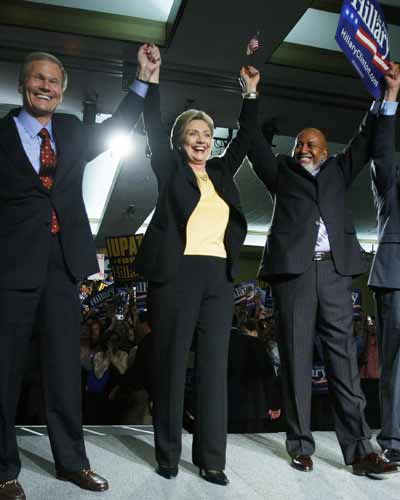Young voters are influenced by negative political ads
 Washington, Feb 13 : A study has revealed that negative political ads have a very powerful impact on young voters minds.
Washington, Feb 13 : A study has revealed that negative political ads have a very powerful impact on young voters minds.
The study, which was done on registered voters between ages 18-23, and which was published in the April issue of the Journal of Consumer Research, revealed that ads, which had a negative angle, provoked more voter migration than positive ads.
Researchers from Notre Dame and the University of Texas at Dallas demonstrated, by using real advertisements from the 2004 presidential election, the way negative political ads impacted the voters’ mindsets.
The research showed how even though the negative political ads were openly disliked, they were still powerful tools for changing the preference and behaviour of a person and benefiting the advertiser.
In the presidential election of 2004, about 77 percent of college-educated 18-24 year olds who were registered, cast their vote, compared to 64 percent of registered voters as a whole. In the upcoming presidential election, young voters may have even more of an impact.
Joan M. Phillips, Joel E. Urbany (both University of Notre Dame), and Thomas J. Reynolds (University of Texas at Dallas) by focusing on the 2004 presidential election, asked participants, 93 percent of whom said at the time that they would definitely vote in the 2004 presidential election, to indicate their likelihood of support on a seven-point scale.
The scale had, definitely Bush, most likely Bush, leaning toward Bush, undecided, leaning toward Kerry, most likely Kerry, definitely Kerry. The order of the candidates was kept at random.
The participants were then shown one of four political ads, their perception of the ad was measured, and they were asked to re-report their likelihood of support for a candidate.
The researchers discovered that an anti-opponent ad was more likely to be less persuasive than a positive pro-candidate ad. However, “the notion that negative ads may be disliked yet influential is paradoxical,” the researchers wrote.
It was found that, negative advertising prompted more movement along the seven-point scale, causing voters to both strengthen their resolve and to move away from the candidate they initially supported.
The negative method also worked the other way, for example, after viewing an ad attacking their favoured candidate, about 14 percent of the voters “dug in their heels” and indicated stronger support for their favoured candidate, who had been the subject of an attack.
But more importantly, the researchers found that 14 percent of the young voters, after they viewed an ad that attacked their preferred candidate, were influenced by the ad’s content and weakened their support, moving in the direction of the advertising candidate. Viewing positive ads did not lead to significant voter movement.
“These findings parallel marketing studies of both comparative and reference price advertising where consumers report disliking or disbelieving the ads, yet the ads still measurably influence consumer behaviour,” the researchers explain.
“Advertising perceived by voters or consumers as negative carries a potential cost. However, these ads also have the potential to change preference and behaviour in ways that benefit the advertiser,” they said.
“We do not conclude that positive political ads are not effective or that negative advertising should be used instead of positive advertising. Rather, our focus is on pointing out that negative advertising has several potential effects,” they added. (ANI)